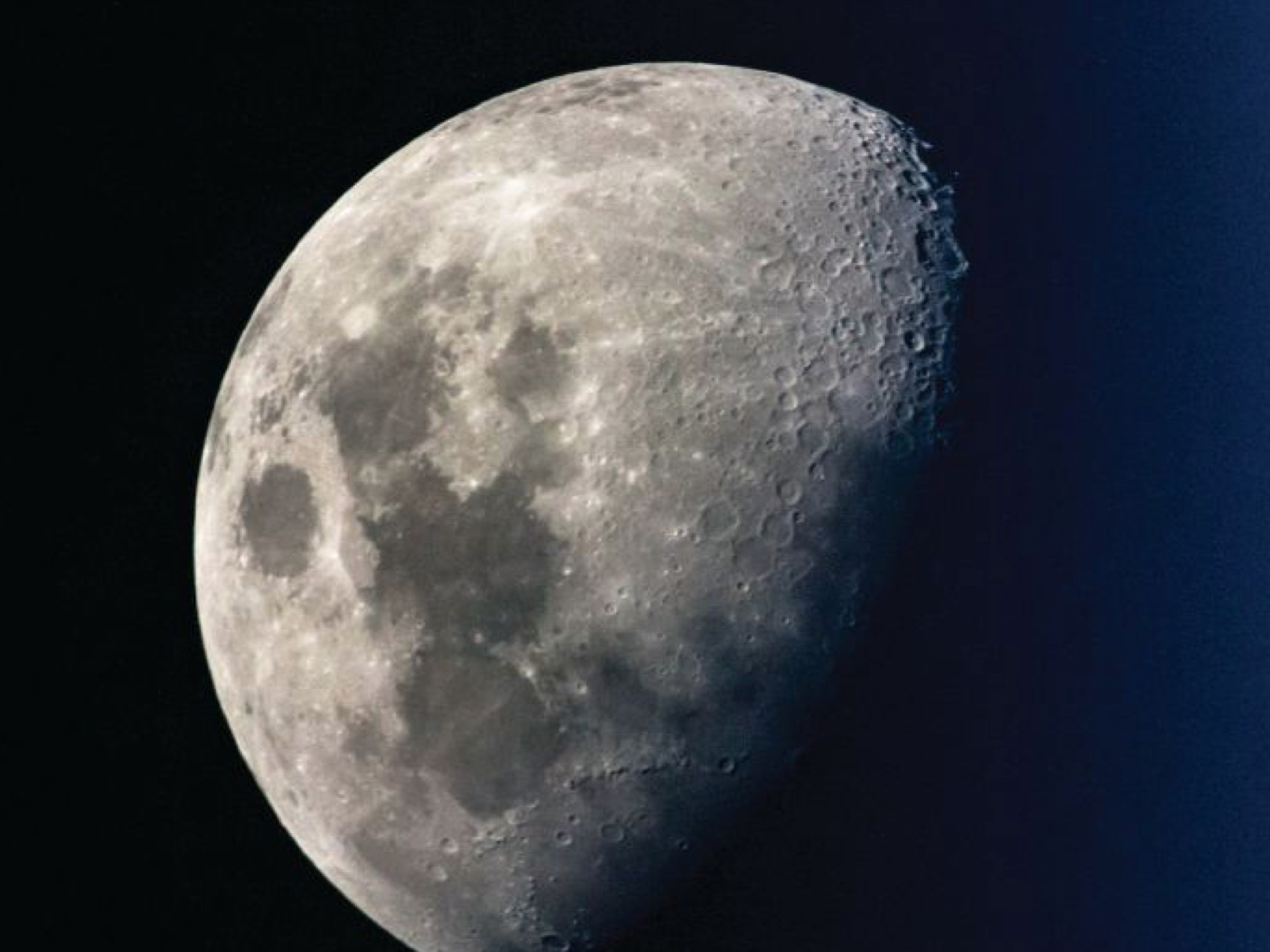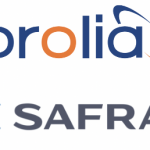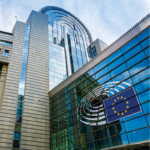The European Space Agency’s new navigation head, Francisco-Javier Benedicto Ruiz, has a lot to say about GNSS, both present and future. We recently spoke with him about his views on satellite navigation, signal vulnerability and authentication, and the agency’s working relationship, or not, with Russia. The technical team behind the Galileo authentication service and industry representatives developing alternative positioning, navigation and timing solutions also share insights.
GNSS is today’s fundamental technology for positioning, navigation and timing (PNT), serving billions of users every day and providing enabling data for all manner of crucial public, private, industrial, commercial and financial applications. Basic GNSS infrastructure, such as GPS and Galileo satellite constellations and ground segments, must continue to be maintained and developed.
At the same time, the inherent weaknesses of these systems have been recognized and European entities are taking action to ensure reliable and accurate PNT remains available under all circumstances and in more and more scenarios.
Earlier this year, Francisco-Javier Benedicto Ruiz became director of navigation of the European Space Agency (ESA), responsible for the definition, planning and execution of the agency’s navigation programs. Speaking about his new responsibilities, Benedicto Ruiz told Inside GNSS, “First of all, we need to continue delivering services with Galileo and EGNOS. Those are the backbone of the European GNSS system, and they are providing excellent performance. We also need to continue improving the systems, so we are working on new developments to increase robustness and to extend their service portfolios.”
Benedicto Ruiz mentioned three specific GNSS projects, one being putting the finishing touches on the long-anticipated Galileo Public Regulated Service (PRS), the provision of which, he said, would begin very soon. Another project is the ongoing development of the second generation of Galileo.
“We are working a lot on this in 2022,” he said. “It will provide for extended capabilities in the second half of this decade.”
The third project is the development of the so-called EGNOS V3, which will monitor and augment Galileo as well as GPS signals.
ESA’s ability to do this good work is dependent on the approval of an adequate budget by its Ministerial Council, which meets to discuss said budget every three years. The next such discussion is scheduled for November.
“The conference involves the ministries of all the ESA member states, who may subscribe to different program components,” Benedicto Ruiz explained. “This year, we’ll go with a package of activities on navigation which is quite ambitious.”
An important element, he said, will be the proposed extension of the Navigation Innovation and Support Program (NAVISP), which is essentially a funding mechanism for new navigation solutions that go beyond the use of GNSS signals and data. This can include the development of competitive industrial capabilities and new technologies to complement, upgrade or replace current PNT technologies.
On its own, GNSS provides invaluable services and data, but GNSS signals are weak, unable to traverse walls and other physical barriers, and are susceptible to interference, both intentional and unintentional. Also, much of GNSS physical infrastructure, including satellites in space, is unprotected and therefore vulnerable to accidents or deliberate hostile actions.
“We are very much concerned about the vulnerability of our GNSS assets and the services provided by them,” Benedicto Ruiz said. “ESA is therefore proposing to the Ministerial Council to provide the necessary means of securing our space assets. Satnav is very much a growing market worldwide, penetrating all domains of application. It is embedded as part of critical services, and therefore satnav simply has to work.”
He continued: “We are going to promote a number of initiatives, one of which is the setting up of European infrastructure for low Earth orbit (LEO) satellite navigation, addressing new frequency bands, to complement the backbone GNSS systems, but also providing for alternative ways of satellite navigation. We are very concerned about resilience, potential interference, jamming, spoofing of the signals, and we are, to that extent, also developing a Galileo authentication service.”
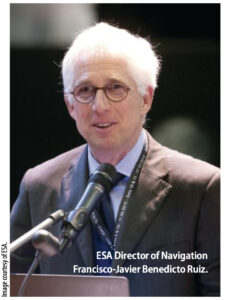
OSNMA Update
Galileo Open Service Navigation Message Authentication (OSNMA) is aimed at protecting the Galileo signal against spoofing attacks. The OSNMA development program has included the definition of a GNSS signal authentication protocol, receiver logic, and adapted cryptographic protocols and functions. The initial service is scheduled for launch in 2023.
“OSNMA is a Galileo differentiator which answers a clear user need for a more robust and trustworthy GNSS solution,” Market Downstream and Innovation Officer at the EU Agency for the Space Program (EUSPA) Flavio Sbardellati said. “For a variety of applications, users will be able to verify whether the navigation message is received from a genuine Galileo satellite or by a potentially malicious source.”
A number of GNSS equipment manufacturers have already prototyped receivers with OSNMA capabilities, including u-blox, STMicroelectronics, Fraunhofer, Orolia, Septentrio, Spirent and others. In addition, some smartphone GNSS chip manufacturers are providing the continuous navigation bit stream to the application layer, enabling OSNMA data authentication and signal replay detection capabilities in smartphones.
“OSNMA is an important contributor to the desired overall security of the application,” Sbardellati said, “but it is anticipated that in most use cases it will be used in combination with other receiver-based or external techniques to reduce the likelihood of success of a spoofing attack and therefore increase the overall security at PNT level.”
One regulated application, the Smart Digital Tachograph, aimed at increasing safety on EU roads, has already been mandated to use OSNMA.
“Other relevant applications include logistics, e.g. proof of delivery, insurance telematics, road user charging, asset/fleet management, autonomous driving, timing and synchronization of energy, finance and telecom networks,” Sbardellati said, “and others, like support to CAP policy in the agriculture domain. Furthermore, should a concept of use be developed to ensure compatibility with mass market solutions, several additional applications such as mobile payments and Internet of Things will likely adopt OSNMA.”
Providing more technical details was Javier Simón, EUSPA service design engineer, who said, “OSNMA authenticates different elements of the Galileo navigation message.”
In particular, during the OSNMA test phase the following authentication types are being tested: Type ADKD0, for Galileo I/NAV orbit and clock correction data, Type ADKD4, for Galileo GST-UTC and GST-GPS conversion parameters, and Type ADKD12, for Galileo I/NAV data and clock correction data, targeting receivers with low synchronization requirements.
“For these authentication types,” Simón said, “the availability of authentication data and the rate of successful tags authentication is being monitored and reported in the Galileo OS Public Performance Report.
“The ultimate target of OSNMA is to provide users with authentication capabilities that do not degrade the performance of the PVT solution, with respect to the OS user not applying OSNMA,” he said. “Several evolutions have been identified and are under development for the service provision phase.”
For example, there will be further improvements of the interface for the delivery of public cryptographic material through the European GNSS Service Center (GSC), provision of applicable public key through the signal in space (SiS) to better support non-connected devices, and optimization of user performance, i.e. time to first fix with authenticated data.
“The main requirements to be implemented on the user side for the processing of OSNMA, as specified in the OSNMA Receiver Guidelines for the test phase, will not vary,” Simón said, “meaning time synchronization and integrity of cryptographic material and functions.”
Ignacio Fernandez, Galileo authentication and high accuracy manager at the European Commission, has been a driving force behind Galileo OSNMA since its conception. He said, “Our view is that market uptake is going well, taking into account that we are not yet operational and the test ICD was published only a few months ago.”
Meanwhile, some receivers have cleverly developed anti-spoofing features using the current GNSS unauthenticated signals, based on power metrics, signal quality, or measurement consistency.
“We believe OSNMA is complementary to that and relatively easy to implement,” Fernandez said, “so it should be an obvious step in the right direction: Most digital information that we use nowadays is authenticated, so GNSS unauthenticated data is an exception. All applications that benefit from satnav and do not have access to GNSS encrypted signals, like the current military ones offered by GPS or other GNSS, will benefit from OSNMA.
“The main objective, performance-wise, is to maintain Galileo open signal performance,” Fernandez said, “in terms of availability, accuracy and time to first fix, while allowing to use authenticated data. Availability and accuracy are already generally maintained worldwide. Regarding time to first fix, OSNMA inherently introduces a delay for standalone, unassisted receivers. This delay may be of about one minute, depending on the receiver implementation. In any case, we have had OSNMA SiS for more than a year, and we can say that the system behaves well and service provision is stable. We are confident that we can reach the operational phase very soon, and encourage the GNSS industry to add OSNMA to their equipment if they haven’t done it yet.”
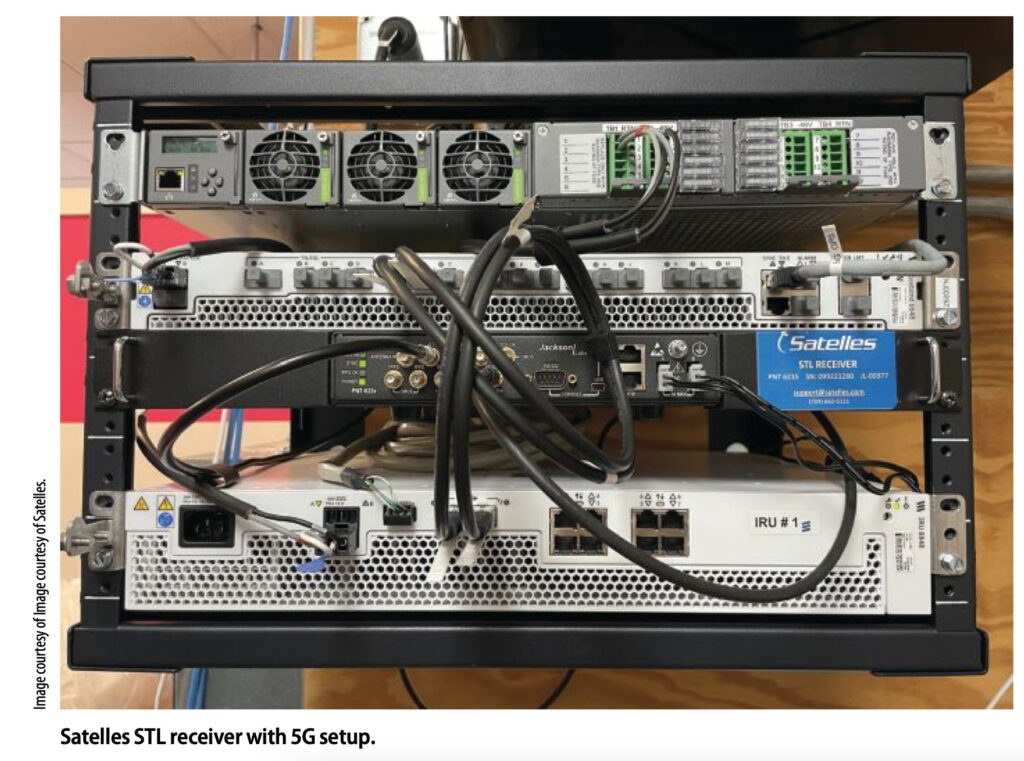
Demonstrating AltPNT
In 2020, the European Commission issued a call for tenders for the demonstration of non-GNSS PNT technologies. These were to be completely independent of GNSS, having no common points of failure with that technology. The initiative was similar to one organized by the U.S. Department of Transportation in 2020. The results of the EC initiative, which was open to companies from outside the European Union (EU), including the United States, were presented in May at the Joint Research Centre (JRC) in Ispra.
Speaking at the event, the JRC’s PNT and GNSS Resilience Specialist Lukasz Bonenberg said, “What we currently are seeing in society is an overreliance on GNSS. We need a back-up system to be ready in case of an outage to increase the resilience of the EU economy. There are also potential economic benefits of the development and implementation of such technologies. The objective of the call for tender was to help us better understand the mature technologies that could deliver positioning, and/or timing information independently from GNSS, resilient to GNSS failure modes and vulnerabilities. Solutions should be able to cover all EU European territory, including in-land waters, and, if possible, to extend PNT provision to environments where GNSS cannot be delivered.”
Aside from demonstrating their systems, participants provided in-depth descriptions of supporting technologies and environments and licensing requirements, and reported cost and timescale details for technology deployment in the EU. The JRC, which is the largest EU facility outside of Brussels and Luxembourg, provided a range of indoor and outdoor test platforms for the demonstrations. Selected participants included OPNT, Seven Solutions, SCPTime, GMV, Satelles, Locata and NextNav.
OPNT Co-Founder Marco Gorter described his Amsterdam-based company’s time and frequency solution, which uses White Rabbit technology on existing optical infrastructure. White Rabbit is essentially an extension of Ethernet, providing sub-nanosecond synchronization over 1Gps Ethernet networks.
Many time-of-day network synchronization solutions use telecom equipment that is capable of distributing time using second generation precision time protocol (PTPv2), referenced to a GNSS timing receiver for traceability to coordinated universal time (UTC). The White Rabbit protocol, developed at the Center for European Nuclear Research (CERN), improves greatly on PTPv2, allowing sub-nanosecond network synchronization with accuracy and reliability beyond GPS. The OPNT White Rabbit/PTPv2 solution turns core and metro-core networks into a distributed source of ‘exact’ UTC.
“We believe we have demonstrated the ability to transfer time and frequency over long distances with better than one nanosecond accuracy,” Gorter said. “We can offer seamless switchover between time sources in case of failure, detect a time source going out of specification and switch over to a valid time source. We can monitor and correct devices with a drifting time source with better than plus or minus 200 nanosecond accuracy by monitoring radio signals.”
SCPTime is a French spin-off of Gorgy-Timing. The company’s COO Sebastien Teot described a new, certified, precise and traceable global time signal: “We can deliver this signal through a unique architecture designed with the French National Metrological Institute and linked to legal UTC.”
OPNT tests at JRC Ispra focused on timing accuracy. Teot also described tests carried out in France, which provided a more encompassing view of SCPTime infrastructure in that country, as well as network resilience and SCPTime timing service availability.
The SCPTime solution showed a drift of less than 1µs when GNSS was not available for 24 hours. When GNSS was unavailable for 14 days, observed drift was 35.9µs. Resilience and network monitoring tests carried out in Paris and Grenoble demonstrated continuity of timing services in different scenarios of network failure or device failure.
“Our management system interface allows full traceability of the time signal, documented with data recording of end-to-end transmission, from UTC to end user devices,” Teot said, “so this can be a key enabler of secure and trusted time.”
David Knutson, NextNav senior vice president of network operations and deployment, made the case for his U.S.-based company’s TerraPoiNT, so-called terrestrial GPS, system: “Our terrestrial broadcast beacons provide wide-area, macro or campus coverage. We are resistant to spoofing and jamming, the signal is 100,000 times stronger than GPS, and we offer an encrypted signal. TerrPoiNT is independent of GPS, and we have built-in atomic clocks and the ability to self-synchronize—nanosecond sync—with an absolute time source.”
NextNav already boasts some high-profile partners, including NASA, which employs TerraPoiNT at the Langley Research Center as part of the CERTAIN program, supporting drone and urban air mobility testing.
TerraPoiNT integrates into GNSS/LTE/5G chipsets at minimal to no cost and is frequency agile. At the JRC, using three beacons and testing only for time synchronization and z-axis vertical positioning, NextNav demonstrated timing stability within 15 ns 90% of the time across the network and end receiver, and vertical positioning accuracy of within +/- 1m 90% of the time through the entire test.
Satelles, another U.S.-based company, is developing a PNT service called Satellite Timing and Location (STL) that’s based on LEO satellites.
“LEO satellites are 25 times closer to the Earth than your typical medium Earth orbit [MEO], GNSS satellites,” Satelles CEO Michael O’Connor said, “and they deliver a signal that is 1,000 times stronger. This high signal power allows us to penetrate deep indoors where GNSS doesn’t reach.”
The satellites providing the signals are owned and operated by Iridium, with which Satelles has an exclusive partnership. LEO satellites have different operational features and performance characteristics compared to MEO systems. They travel at speeds up to approximately 27,000 kpm, resulting in carrier frequency variations due to Doppler effects.
LEO-based solutions are, by their nature, global, bringing precise timing and 2D and 3D positioning to every spot on the planet. Polar orbits ensure true global coverage even at the poles where GNSS signals are weak. Look angles in the sky change continuously due to the rapidly traversing orbits, making it possible for signals to reach receivers in challenging locations.
“STL is rated at TRL9,” O’Conner said, “which is the highest technology readiness level, and it’s been validated by the U.S. Department of Transportation and other authorities.” Needless to say, the testing campaign at Ispra revealed perfectly impressive performance by the Satelles system in indoor and outdoor timing and positioning trials.
Overall, the JRC trials demonstrated there is a range of alternative PNT technology solutions ready for deployment, and/or already being deployed successfully as back-up systems to GNSS. We need only choose.
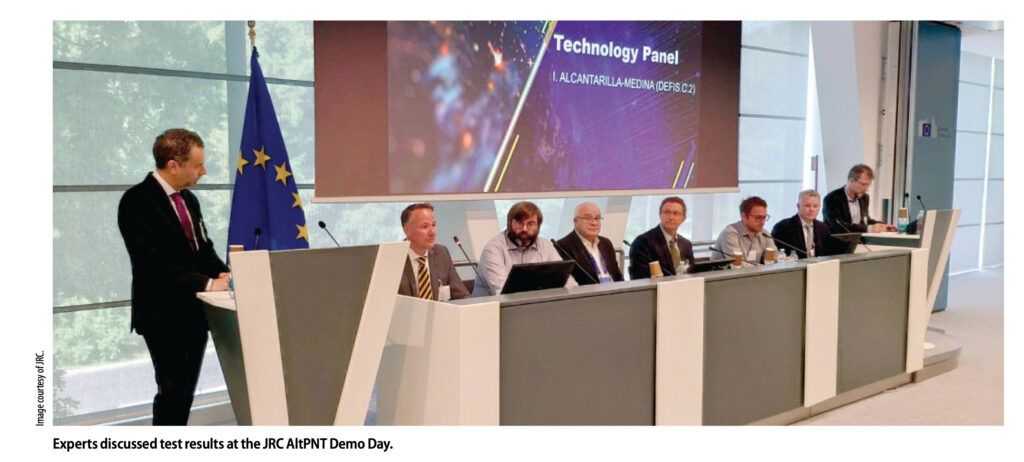
Other Fronts
Back at ESA, Benedicto Ruiz talked about more issues and priorities for the Navigation section.
“Another new program which has been generating a lot of talk is Moonlight,” he said. “This is about bringing navigation to the moon. There is a very important international cooperation dimension, with NASA in particular, but we are open to cooperation with other space agencies and private initiatives that will operate in the frame of the lunar economy of the future.”
The UK remains a core partner for ESA Navigation, in spite of its having left the EU. “I consider it an enormous pity that the UK is no longer a party to the EU,” Benedicto Ruiz said. “This is a great loss, in my opinion, to the European Union. This does have consequences in terms of their participation in some strategic EU programs, in particular Galileo.”
ESA has had to develop new competencies in EU member states, replicating some of the work that was previously done in the UK.
“This is behind us, and now we are looking to the future,” Benedicto Ruiz said. “UK is a very strong member of ESA, a very strategic partner. Our ESA European Center for Space Applications and Telecommunications (ECSAT) is in Harwell, and the UK is also a primary sponsor of the NAVISP program and will very soon set up a national PNT office. We are looking forward to having a very close collaboration through that PNT office. The competencies of UK industrial groups, but also universities, like Nottingham University, are fantastic. SSTL [Surrey Satellite Technology] of course is part of the Airbus group, with which we cooperate very well.”
SSTL has set up a spin-off company dealing exclusively with moon exploration and collaborating with ESA on the Lunar PathFinder project, which will embark for the first time with a GNSS receiver onboard in the 2025 time frame.
“We will demonstrate the reception of GNSS signals around the moon,” Benedicto Ruiz said, “and the possibility of establishing there a position fix using Galileo and GPS.”
And Then, Russia
Affiliation and partnership are core principles for ESA, but partnerships can sour, as illustrated very rudely in Europe over recent months.
“ESA follows the directives, the political directions of its members states,” Benedicto Ruiz said. “Within the ESA Council, member states meet and decisions are taken by consensus. We generally align ourselves very much with European Union policy. In this respect, unfortunately, the invasion of Ukraine by Russia has deteriorated our relationship. We have seen our Russian colleagues—who were providing excellent launch services from the European Spaceport in French Guyana for many years, supporting very effectively the deployment of the Galileo constellation—we saw them departing a few months ago. This has put on hold the launch of the next Galileo satellites, which now have to wait for Ariane 6.”
There also have been crucial setbacks for other programs in human and robotic exploration, such as the Exobiology on Mars (EXOMARS) mission.
“There are activities that we cannot continue anymore, so there are a number of implications,” Benedicto said. “The Galileo launch scheduled for last April (2022) was cancelled. We have 10 first generation Galileo satellites with production completed, ready to be launched or soon ready to be launched. So those satellites will have to wait. Ariane 6 is scheduled to lift off for the first time next year and Galileo will be one of its first passengers. Obviously, we are looking forward to this war coming to an end, and hopefully in the future to be able to reestablish fruitful cooperation with Russia, who has always been a very good partner of space activities at international level with Europe but also with the U.S. and others.”
Final thoughts
Asked if he had a last word for Inside GNSS readers, Benedicto Ruiz said, “I have been working on satellite navigation for the last almost 30 years, and I can look at the past and see how much satnav has evolved in general and how much Europe has managed to develop its own infrastructure and contribute to the global economy with our PNT solutions. We believe satellite navigation is and will remain an essential component of our economy and our society. This is an enormous challenge but also an opportunity.”

